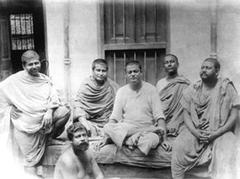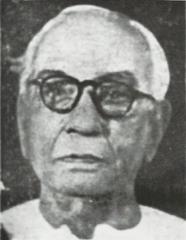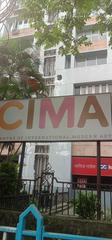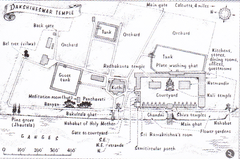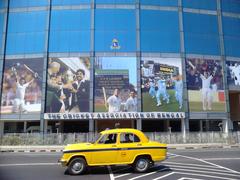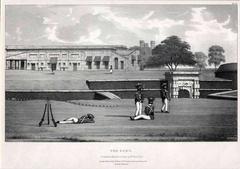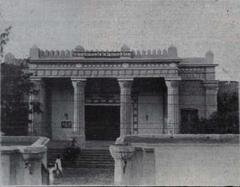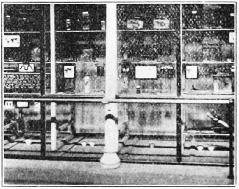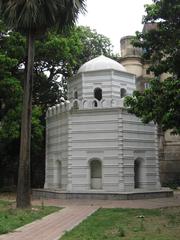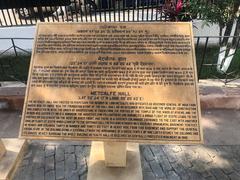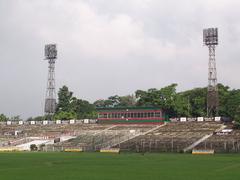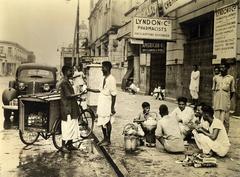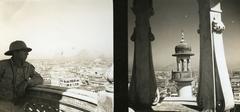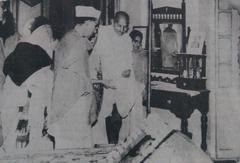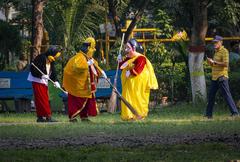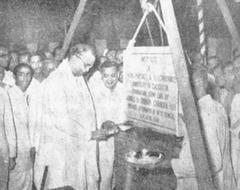
Swami Vivekananda Statue Kolkata: Visiting Hours, Tickets, and Travel Guide
Date: 04/07/2025
Introduction
Kolkata, often hailed as the cultural capital of India, is intrinsically linked with the legacy of Swami Vivekananda—one of the country’s most influential spiritual leaders and reformers. The city houses several prominent monuments and sites commemorating his life, teachings, and enduring influence. Among these, the Swami Vivekananda statues in Lake Town and Golpark stand out as iconic landmarks, drawing locals, pilgrims, and tourists alike. This guide provides comprehensive details on visiting these statues, including their historical context, visiting hours, ticket information, accessibility, and nearby attractions. Additionally, it highlights other significant sites associated with Vivekananda, ensuring a meaningful and enriching visit to Kolkata’s spiritual and cultural heart.
Table of Contents
- Historical Background
- Swami Vivekananda Statue in Lake Town
- Swami Vivekananda Statue at Golpark
- Nearby Historical Sites and Heritage Circuit
- Restoration and Preservation Efforts
- Cultural Significance and Public Reception
- Special Events and Commemorations
- Frequently Asked Questions (FAQ)
- Summary and Recommendations
- Sources and Further Reading
Historical Background
Origins and Historical Context
The Swami Vivekananda statues across Kolkata honor the legacy of Narendranath Datta (1863–1902), better known as Swami Vivekananda. Born and raised in Kolkata, he emerged as a leading spiritual figure, reviving Indian philosophy and presenting Vedanta and Yoga to the Western world. His association with spiritual luminary Sri Ramakrishna, transformative address at the 1893 Parliament of the World’s Religions in Chicago, and role in founding the Ramakrishna Math and Mission are pivotal moments in Indian spiritual history (Cultural India, Discover Walks).
Swami Vivekananda: Life and Influence
Vivekananda’s teachings emphasized the unity of all religions, selfless service (Karma Yoga), and the empowerment of youth. He is celebrated as a bridge between India’s spiritual past and its modern aspirations. His birthday, January 12th, is observed as National Youth Day, reflecting his enduring impact on generations of Indians (PWOnlyIAS). Kolkata’s landscape is dotted with tributes to Vivekananda, from his ancestral home and spiritual headquarters at Belur Math to statues that embody his ideals.
Swami Vivekananda Statue in Lake Town
Location and Accessibility
- Address: 441, Canal Street, Sreebhumi, Lake Town, South Dumdum, Kolkata
- Landmark: Near Sreebhumi Sporting Club; 0.66 km from Patipukur railway station
- Access: Well-connected via public buses, taxis, and auto-rickshaws; ample parking available
- Accessibility: Pathways suitable for wheelchair users, though planning a visit during daylight is recommended for convenience (Yappe).
Visiting Hours and Tickets
- Hours: 7:00 AM to 7:00 PM (daily)
- Entry Fee: None; the site is free and open to all
- Best Time to Visit: Early mornings or late afternoons for pleasant weather and optimal lighting for photography
Visitor Amenities and Tips
- Site is maintained by the Bidhannagar Municipality, ensuring cleanliness and a welcoming atmosphere
- Photography is permitted; the statue’s artistic “chariot of youth” depiction is particularly photogenic
- Respect the spiritual significance of the site
- Local guides and travel agencies may offer heritage tours that include the statue and nearby attractions
Statue Design and Symbolism
The Lake Town statue portrays Swami Vivekananda as the “charioteer of youth,” symbolizing his role as a guide and mentor to India’s young generation. This dynamic depiction, set amidst a vibrant neighborhood, makes the landmark both a source of inspiration and a popular gathering point (Yappe).
Swami Vivekananda Statue at Golpark
Golpark Location and Accessibility
- Address: Golpark, South Kolkata, West Bengal, India
- Landmark: Central traffic roundabout at the convergence of Gariahat, Ballygunge, and Dhakuria neighborhoods
- Nearest Metro: Rabindra Sarobar (approx. 2 km away)
- Public Transport: Well-served by buses, taxis, and auto-rickshaws; trams run nearby
- Accessibility: Sidewalks are accessible; reaching the statue’s central island may require extra caution due to traffic (Kolkata Tourism).
Golpark Visiting Hours and Practical Tips
- Hours: Open-air monument accessible 24/7
- Entry Fee: None
- Best Time to Visit: Early morning or late evening for tranquility and beautiful lighting; statue illuminated at night
- Safety: Use designated crossings; exercise caution when accessing the central island
Golpark Statue Details and Setting
- Material: Bronze
- Height: 12 feet statue on an 8-foot pedestal (total ~20 feet)
- Artist: Anit Ghosh, Government College of Art & Craft, Kolkata
- Year of Installation: Original marble statue (1966); bronze version installed in 2005 (Wikipedia)
- Surroundings: Landscaped gardens, seating areas, bookshops, cafes, and the Ramakrishna Mission Institute of Culture
Nearby Historical Sites and Heritage Circuit
Kolkata’s Swami Vivekananda heritage circuit offers several must-visit sites:
- Swami Vivekananda’s Ancestral House and Cultural Centre: Explore the restored family home and museum, showcasing personal artifacts and interactive exhibits (Vivekananda Home).
- Belur Math: Spiritual headquarters of the Ramakrishna Mission; unique architecture and tranquil gardens on the Hooghly River (Belur Math Media).
- Dakshineswar Kali Temple: Site of Vivekananda’s formative spiritual encounters with Sri Ramakrishna; connected to Belur Math by ferry (TravelSetu).
- Ramakrishna Mission Institute of Culture, Golpark: Library, cultural programs, and seminars inspired by Vivekananda’s ideals.
- College Street and Scottish Church College: Intellectual heart of Kolkata, where Vivekananda studied.
- Cossipore Udyanbati: Where Sri Ramakrishna spent his final days, visited by Vivekananda.
Each site offers a distinct perspective on the spiritual, intellectual, and cultural milieu that shaped Vivekananda’s worldview.
Restoration and Preservation Efforts
Swami Vivekananda’s ancestral house at 3 Gourmohan Mukherjee Street has been meticulously restored by the Ramakrishna Mission and Archaeological Survey of India. Designated as a heritage building, it now functions as an educational complex and museum, with a 12.5-foot bronze statue unveiled in 2008 to honor Vivekananda’s memory (Vivekananda Home).
Cultural Significance and Public Reception
The Swami Vivekananda statues in Kolkata are widely recognized for their artistic merit and inspirational presence. They serve as focal points for reflection, community gatherings, and cultural celebrations. The annual National Youth Day (January 12) and processions marking significant anniversaries reinforce Vivekananda’s relevance in contemporary society and youth empowerment (PWOnlyIAS, Yappe).
Special Events and Commemorations
- Swami Vivekananda Jayanti (January 12): National Youth Day celebrations, processions, and community events.
- Anniversary Processions: Statues are paraded through Kolkata’s historic streets, culminating at sites like Alambazar Math (Belur Math Media).
- Cultural Programs: Seminars, lectures, and youth festivals at the Ramakrishna Mission Institute of Culture and other venues.
Frequently Asked Questions (FAQ)
Q: What are the visiting hours for the Swami Vivekananda statues?
A: Lake Town statue: 7:00 AM–7:00 PM; Golpark statue: accessible 24/7.
Q: Is there an entry fee?
A: No, both statues are free to visit.
Q: Are the sites wheelchair accessible?
A: Pathways at Lake Town are accessible; Golpark sidewalks are accessible, but reaching the statue’s island may require assistance.
Q: Are guided tours available?
A: Not at the statues directly, but local agencies and cultural centers often offer heritage tours.
Q: What are other nearby sites related to Swami Vivekananda?
A: Ancestral House, Belur Math, Dakshineswar Kali Temple, and the Ramakrishna Mission Institute of Culture.
Q: Can I take photographs?
A: Yes, photography is encouraged at the statues (observe rules at temples and museums).
Summary and Recommendations
The Swami Vivekananda statues in Kolkata—particularly at Lake Town and Golpark—are more than just physical monuments; they are living symbols of spiritual strength, youth empowerment, and national pride. Their central locations, free access, and artistic grandeur make them essential stops for anyone seeking to understand Kolkata’s spiritual and intellectual heritage. Combined with nearby sites such as Belur Math and Vivekananda’s Ancestral House, visitors can experience a comprehensive heritage circuit that illuminates the life and values of this iconic leader.
For the most enriching experience, plan your visit around commemorative events, utilize public transport for convenience, and consider guided tours for deeper insights. Respect the sanctity of these spaces, and immerse yourself in the legacy that continues to inspire generations.
For travel tips, virtual tours, and updates on Kolkata’s historical and spiritual sites, download the Audiala app and follow us on social media.
Sources and Further Reading
- Visiting the Swami Vivekananda Statue in Kolkata: Hours, Tickets & Nearby Historical Sites, 2025, Cultural India, Discover Walks, Yappe (Cultural India), (Discover Walks), (Yappe)
- Swami Vivekananda Statue Kolkata: Visiting Hours, Tickets, and Historical Significance, 2025, PWOnlyIAS, Yappe.in, Vivekananda Home, Belur Math Media, TravelSetu (PWOnlyIAS), (Yappe.in), (Vivekananda Home), (Belur Math Media), (TravelSetu)
- Swami Vivekananda Statue Visiting Hours, Tickets, and Guide to Kolkata’s Historical Site at Golpark, 2025, Kolkata Tourism, LatestLY, Wikipedia, Ramakrishna Mission (Kolkata Tourism), (LatestLY), (Wikipedia), (Ramakrishna Mission)
- Swami Vivekananda in Kolkata: Visiting Hours, Tickets, and Nearby Historical Sites, 2025, Vivekananda Home, Backpack N Explore, Belur Math, RMIC (Vivekananda Home), (Backpack N Explore), (Belur Math), (RMIC)

